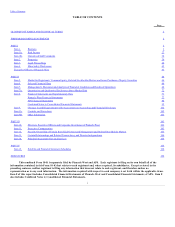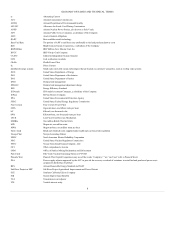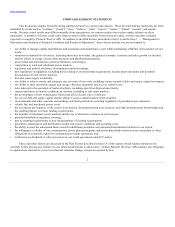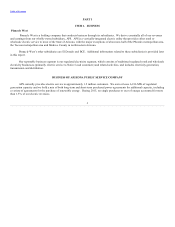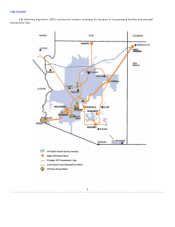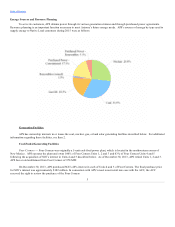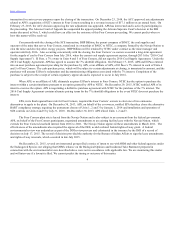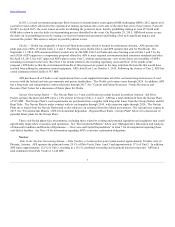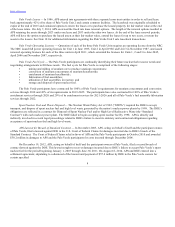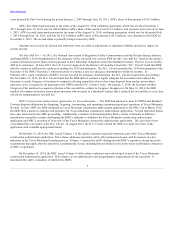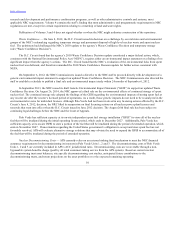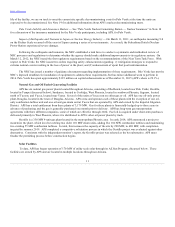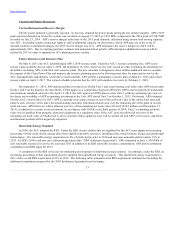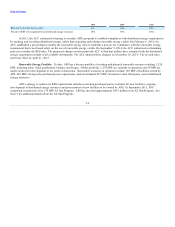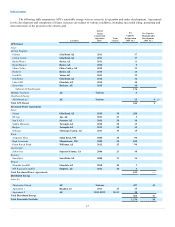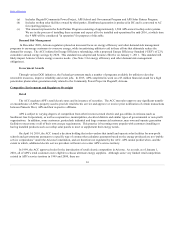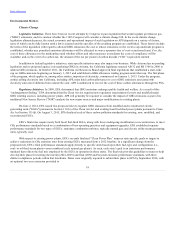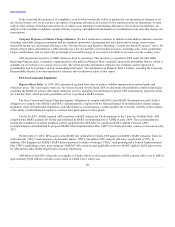APS 2015 Annual Report Download - page 13
Download and view the complete annual report
Please find page 13 of the 2015 APS annual report below. You can navigate through the pages in the report by either clicking on the pages listed below, or by using the keyword search tool below to find specific information within the annual report.
Table of Contents
research and development and performance confirmation programs, as well as other administrative controls and systems, meet
applicable NRC requirements. Volume 4 contains the staff’s finding that most administrative and programmatic requirements in NRC
regulations are met, except for certain requirements relating to ownership of land and water rights.
Publication of Volumes 3 and 4 does not signal whether or when the NRC might authorize construction of the repository.
Waste Confidence — On June 8, 2012, the D.C. Circuit issued its decision on a challenge by several states and environmental
groups of the NRC’s rulemaking regarding temporary storage and permanent disposal of high level nuclear waste and spent nuclear
fuel. The petitioners had challenged the NRC’s 2010 update to the agency’s Waste Confidence Decision and temporary storage
rule (“Waste Confidence Decision”).
The D.C. Circuit found that the agency’s 2010 Waste Confidence Decision update constituted a major federal action, which,
consistent with the National Environmental Policy Act (“NEPA”), requires either an environmental impact statement or a finding of no
significant impact from the agency’s actions. The D.C. Circuit found that the NRC’s evaluation of the environmental risks from spent
nuclear fuel was deficient, and therefore remanded the 2010 Waste Confidence Decision update for further action consistent with
NEPA.
On September 6, 2012, the NRC Commissioners issued a directive to the NRC staff to proceed directly with development of a
generic environmental impact statement to support an updated Waste Confidence Decision. The NRC Commissioners also directed the
staff to establish a schedule to publish a final rule and environmental impact study within 24 months of September 6, 2012.
In September 2013, the NRC issued its draft Generic Environmental Impact Statement (“GEIS”) to support an updated Waste
Confidence Decision. On August 26, 2014, the NRC approved a final rule on the environmental effects of continued storage of spent
nuclear fuel. The continued storage rule adopted the findings of the GEIS regarding the environmental impacts of storing spent fuel at
any reactor site after the reactor’s licensed period of operations. As a result, those generic impacts do not need to be re-analyzed in the
environmental reviews for individual licenses. Although Palo Verde had not been involved in any licensing actions affected by the D.C.
Circuit’s June 8, 2012, decision, the NRC lifted its suspension on final licensing actions on all nuclear power plant licenses and
renewals that went into effect when the D.C. Circuit issued its June 2012 decision. The August 26th final rule has been subject to
continuing legal challenges before the NRC and the Court of Appeals.
Palo Verde has sufficient capacity at its on-site independent spent fuel storage installation (“ISFSI”) to store all of the nuclear
fuel that will be irradiated during the initial operating license period, which ends in December 2027. Additionally, Palo Verde has
sufficient capacity at its on-site ISFSI to store a portion of the fuel that will be irradiated during the period of extended operation, which
ends in November 2047. If uncertainties regarding the United States government’s obligation to accept and store spent fuel are not
favorably resolved, APS will evaluate alternative storage solutions that may obviate the need to expand the ISFSI to accommodate all of
the fuel that will be irradiated during the period of extended operation.
Nuclear Decommissioning Costs — APS currently relies on an external sinking fund mechanism to meet the NRC financial
assurance requirements for decommissioning its interests in Palo Verde Units 1, 2 and 3. The decommissioning costs of Palo Verde
Units 1, 2 and 3 are currently included in APS’s ACC jurisdictional rates. Decommissioning costs are recoverable through a non-
bypassable system benefits charge (paid by all retail customers taking service from the APS system). Based on current nuclear
decommissioning trust asset balances, site specific decommissioning cost studies, anticipated future contributions to the
decommissioning trusts, and return projections on the asset portfolios over the expected remaining operating
10


